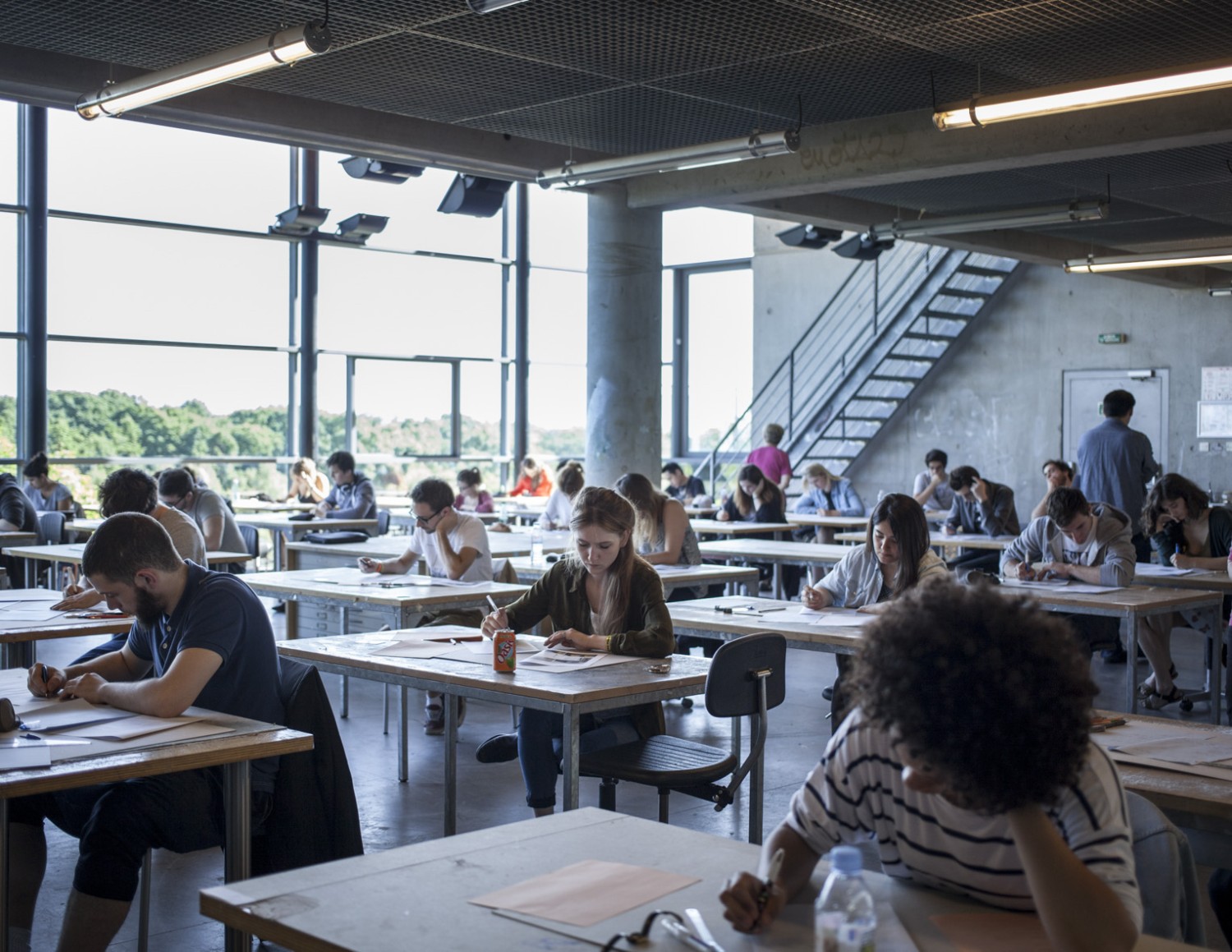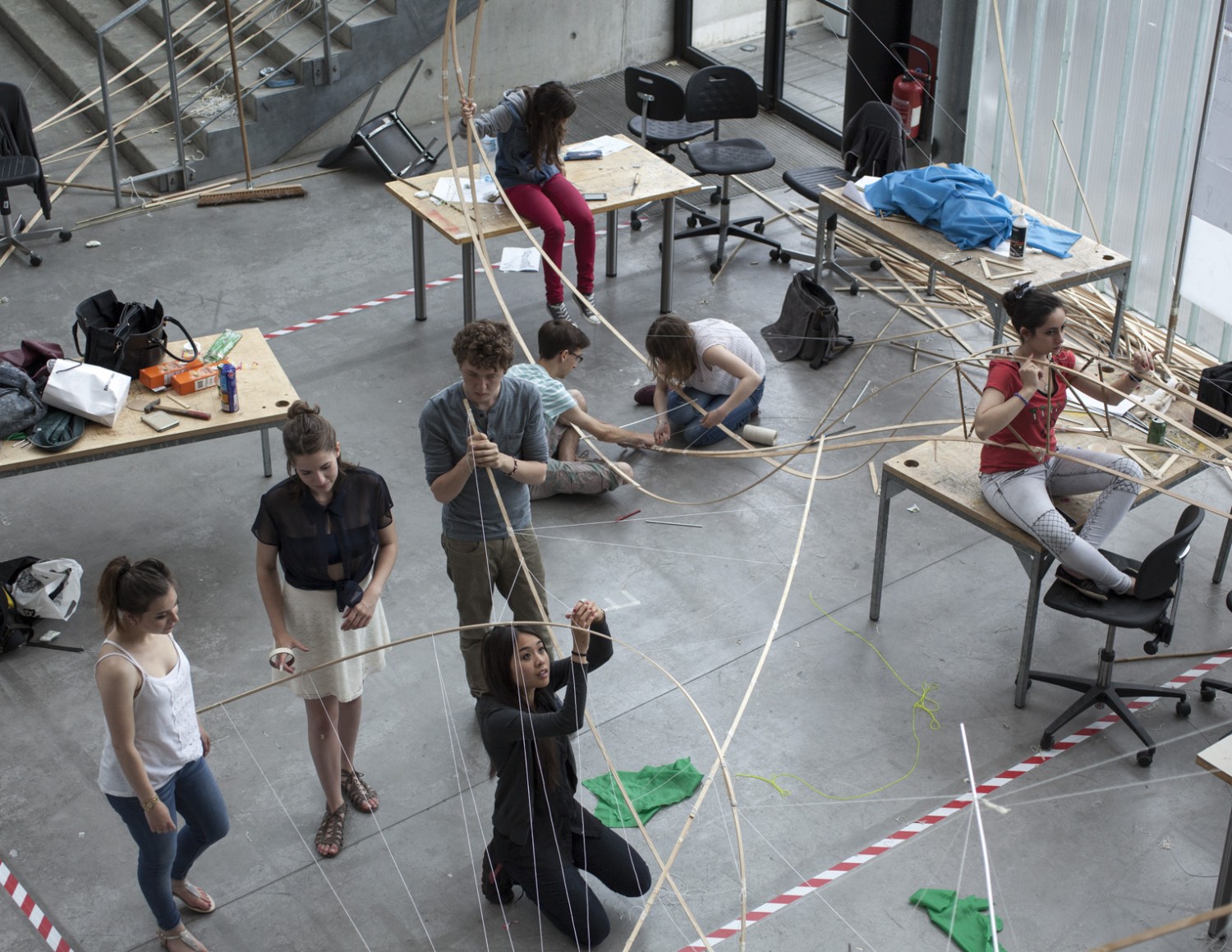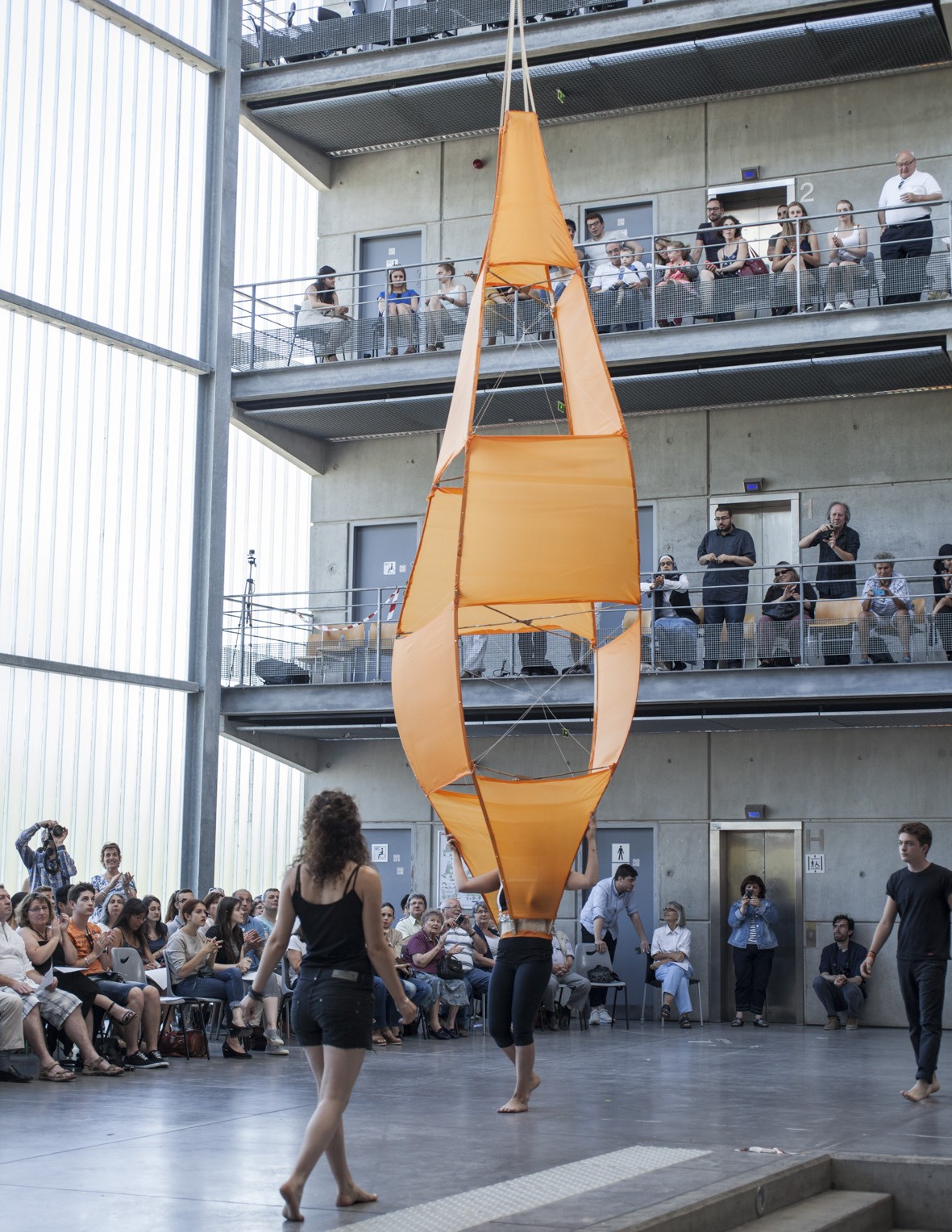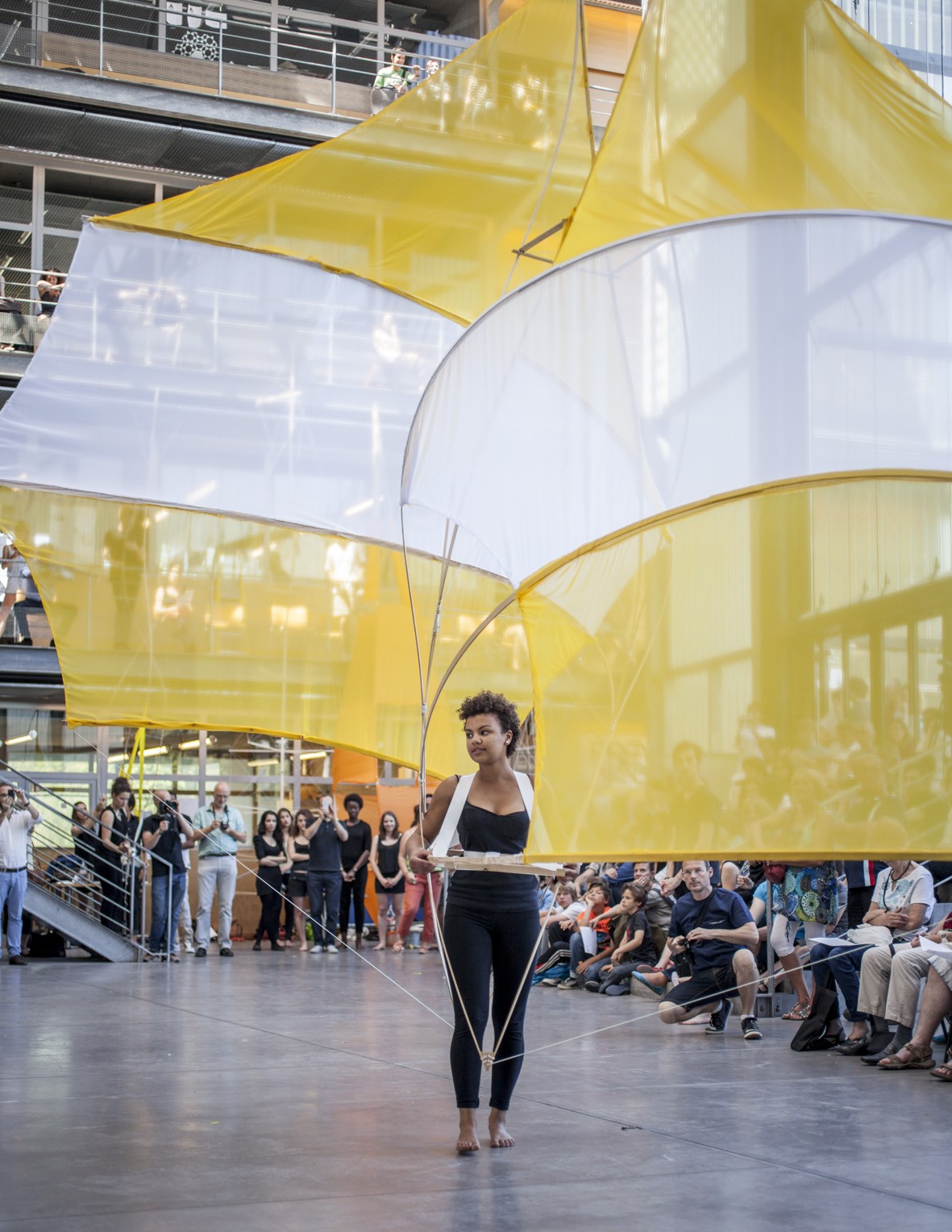Licence
At the École d'architecture de la ville & des territoires, The first cycle gives each student the means to acquire the fundamental knowledge of architecture. To avoid the scattering of disciplines, alongside the architectural project the teaching is not multiplied, but refocused on four fields of fundamental subjects: Territory, History and Theory, Constructive Cultures and Representation, which are systematically taught in lectures and/or tutorials.
Presentation and specificities
The first cycle or Licence lasts three years and leads to the Diploma of Architectural Studies (DEEA), which confers the degree of Licence. The training is centered on the practice of the project and on the acquisition of the fundamental concepts and tools of the discipline through four complementary fields: history and theory, construction, territory and representation. It concludes with the production of a study report, a true initiation to research. The course includes two compulsory internships (worker internship and first practice internship). These two periods aim at apprehending the diversity of professional practices - the world of
of building and construction for the first, and the world of architecture (agencies, UDAP, local authorities, etc.) for the second. In case of difficulties (particularly in the first year), students can benefit from personalized support through tutoring.
The project teaching
Project workshops are an essential part of architectural education. It is within this framework that students learn in a concrete way how to shape projects, whether they concern the scale of the building or the landscape and the territory on a larger scale.
The project workshops are the places where all the courses given at the school are synthesised and take on a concrete and practical dimension. It is the ideal place for the integration of ideas and practice.
The Territory field
As its name suggests, our school emphasises the issue of territory. Architecture concerns buildings as well as
the space between them; streets, squares, public space in the broadest sense in the case of urban environments; but also roads, lanes, the fields themselves, in a rural environment. In the courses in the field of territory, students learn to articulate the different scales, from the largest to the smallest. This learning is based on the
observation of landscapes, whether they are urban, peri-urban or rural: learning to look is already gaining knowledge. By making projects at all scales and, above all, by integrating all scales into all projects, we
can ask what types of buildings can be accommodated in such and such a territorial scale plan. How do the materials available in a given region influence the architecture of the buildings themselves, for example? By extension, courses in the field of territory also include environmental history and sustainable development issues.
The History and Theory field
Architecture is an ancient discipline which, moreover, has developed in the most diverse latitudes and cosmogonies. In the course of time, solutions have emerged that students should be aware of as they will
feed their understanding of the discipline as well as their own projects. Furthermore, architecture is based on a series of theories, principles and ideas, which are all conceptual tools that allow us to think very concretely about the relationship between history and the contemporary world. These two fields, history and theory, are therefore intrinsically linked. They are the tools by which the quantifiable questions of technique and function, in particular, become cultural questions, that is, in this case, architectural ones.
The Constructive Cultures field
Construction is, par excellence, linked to architecture: it is the material means by which buildings can exist. It is therefore indispensable but, subject to the rules of nature and, in particular to gravity, it also represents a strong and immediate constraint. Architecture takes positive advantage of this constraint as well as of many others. In the courses in this field, students learn about the main types of structures, the characteristics of the principal materials, and the art of building as a whole. These courses make very little use of calculation: it is more a question of acquiring an intuition, reflexes as to the constraints of construction, than of knowing how to calculate structures or the resistance of a particular work. Architectural studies are therefore potentially open to holders of
all types of baccalaureate. It is the elements of this constructive culture that students will find, among others, transformed into formal and cultural concepts, in the theory and history courses.
The Representation field
In architecture, drawing - whether plans, perspectives, collages, etc., - photography, video, models, casts, and any other means by which buildings and ideas are represented before or after their construction, are tools for communicating with the outside world. But beyond that, they are also design tools. In the courses in the field of representation, students learn to master these tools, as well as their history and significance, because
representation is an integral part of architecture, and most of the major architectural movements are attached to specific systems of representation.
Organization
- three years, i.e. six semesters leading to the diploma of architectural studies;
- 2,200 hours of supervised teaching;
- 50% of the time devoted to the project; 50% devoted to the other courses;
- teaching structured in teaching units (UE);
- two compulsory internships;
- The diploma is obtained after validation of all the teaching units of this cycle (180 ECTS);
- Diversified teaching methods: workshop work, lectures, tutorials, visits, educational and intensive trips.
Admission
The licence is open to candidates who hold:
- the baccalaureate (all streams);
- a certificate of success in a diploma of access to university studies;
- a French or foreign qualification accepted as equivalent to the baccalaureate;
- experience and as such subject to the procedure for the validation of their studies, professional experience or personal achievements (VA).
And afterwards
The Diploma of Architectural Studies (DEEA) allows students to enter a master's degree program or to work as a draftsman in an architectural firm, urban planning firm or design office (for graduates of the School of Architecture).
Manager
1re année
Ambra Fabi
2e année
S1 - Fosco Lucarreli
S2 - Claire Vernhes
3e année
S1 - Christophe Widerski
S2 - Thibaut Barrault
Champ représentation
Mariabruna Fabrizi
Champ histoire et théorie
Laurent Koetz
Champ territoire
Sébastien Marot
Champ cultures constructives
Jean-Marc Weill
In brief
ECTS Credits : 180
Duration : 3 ans
Level of studies : bac + 3
All documents relating to the organisation of studies for the academic year are available on the intranet





